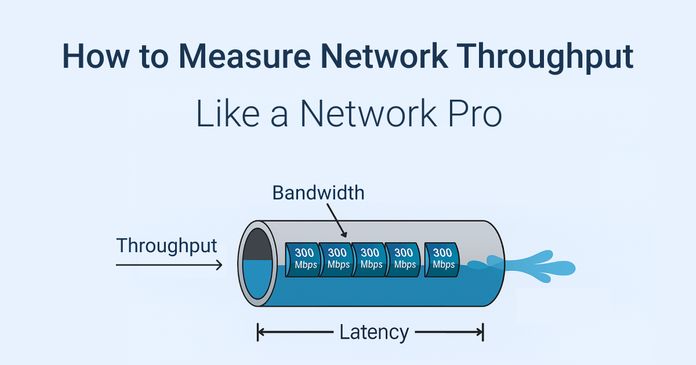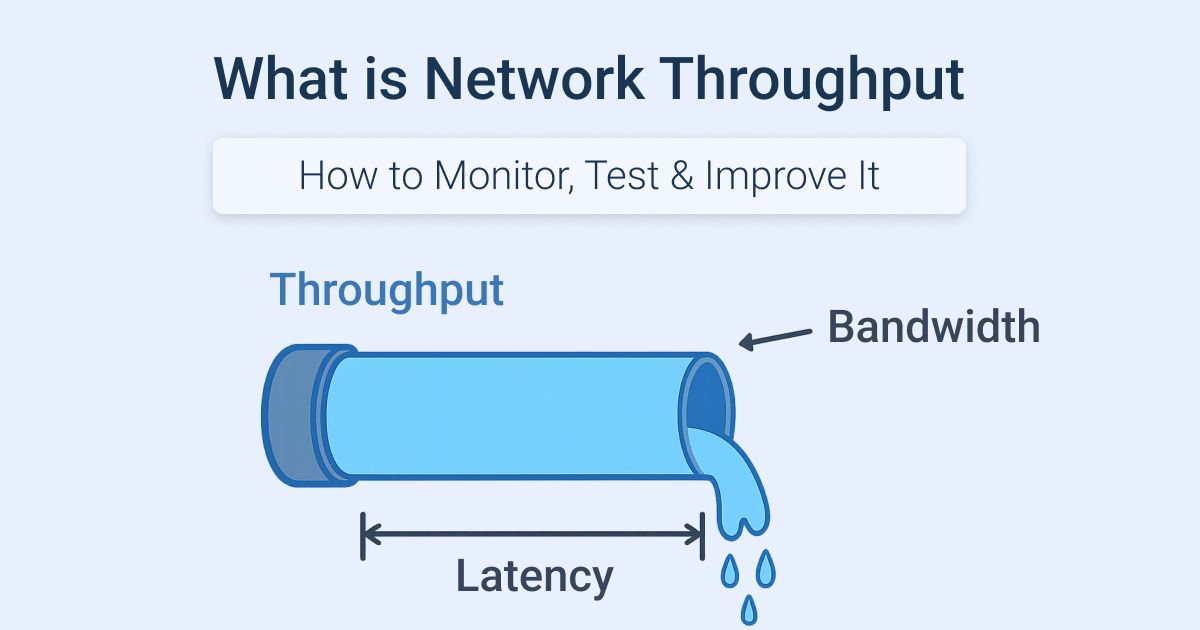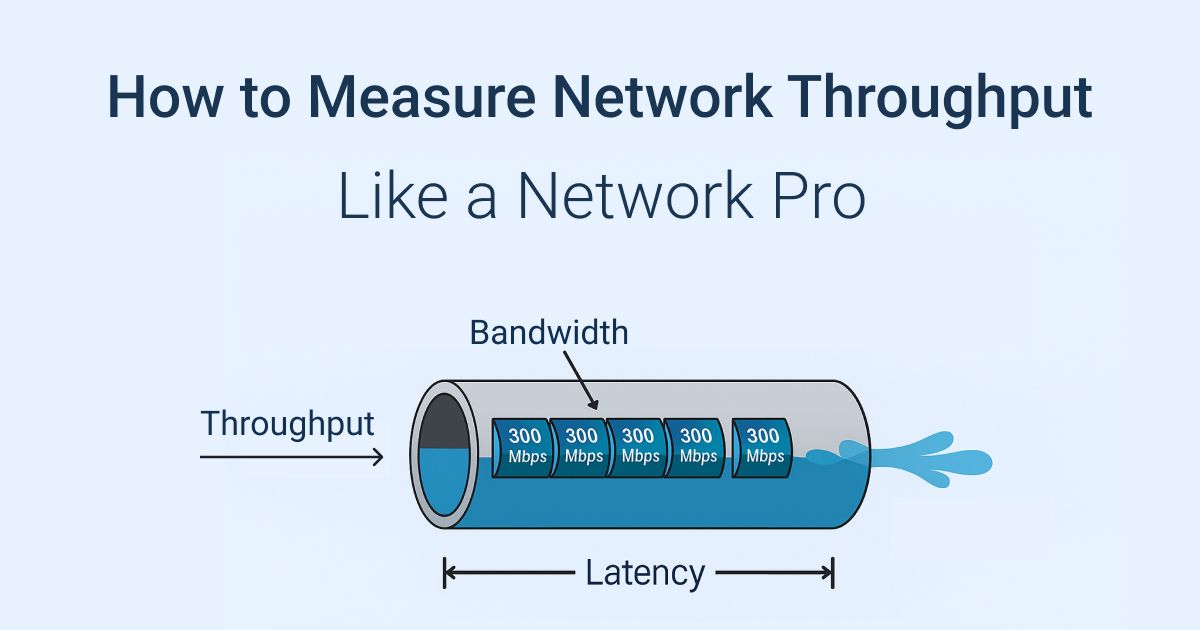Table of Contents
Table of Contents
Two key metrics that often come up in discussions about network performance are throughput and goodput. While these terms may seem similar, they highlight different aspects of your network’s efficiency and misunderstanding them can lead to poor decision-making that can impact the way you manage your network and your business’ resources.
Throughput measures the total amount of data flowing through your network, including overhead like headers and retransmissions. Goodput, however, focuses on the amount of useful data successfully delivered to its destination, excluding any unnecessary overhead. This distinction is essential for assessing the true performance of your network, particularly when it comes to end-user experiences such as video conferencing, file transfers, or cloud-based applications.
if you're an IT pro or network admin, we’ll clarify the differences between throughput and goodput, explain how they directly impact your business operations, and offer strategies to accurately measure and improve both metrics. Understanding and optimizing these metrics will help you make informed decisions that improve network performance, enhance user satisfaction, and ultimately support your business’s goals.
Throughput refers to the total amount of data that successfully passes through your network over a specific period, typically measured in megabits per second (Mbps) or gigabits per second (Gbps). This metric gives a snapshot of how much data is being transferred across your network, providing an indication of your network’s capacity to handle traffic.

Throughput is relatively straightforward to measure because it includes all the data sent across your network, including both the useful data and any additional overhead such as headers and retransmissions.
Here’s how throughput is typically measured:
Network Performance Monitoring Tools:
One of the most common and accurate ways to measure network throughput is by using a network monitoring tool, whether synthetic or packet capture-based. These tools allow you to track key performance metrics in real time, ensuring that you have an accurate view of your network’s health and performance.
Obkio offers a comprehensive network performance monitoring solution designed to give businesses real-time visibility into network health and end-user experience. The platform tracks key metrics such as throughput, jitter, latency, and more, providing valuable insights to help optimize your network. Obkio’s solution is built to help you pinpoint issues quickly, allowing you to improve network performance and ensure that your business-critical applications are running smoothly.
Obkio’s Network Throughput Monitoring Tool measures network throughput with precision by using synthetic traffic. This synthetic traffic consists of UDP packets that simulate real-world network usage. These packets are sent between Network Agents deployed at both ends of your network, allowing Obkio to accurately measure throughput.

- 14-day free trial of all premium features
- Deploy in just 10 minutes
- Monitor performance in all key network locations
- Measure real-time network metrics
- Identify and troubleshoot live network problems

Obkio ensures that throughput measurements are reliable, reflecting the actual performance of your network rather than being skewed by other variables. This method allows you to monitor and optimize throughput without the influence of external traffic conditions, providing a clearer picture of your network’s true performance.
Speed Tests:
Online tools like Speedtest.net or Fast.com provide an easy way to measure raw throughput between your device and a test server. While this is convenient, it only reflects your throughput in a real-world setting and may not be fully representative of your network's internal performance.
Throughput Formula:

Where Throughput Is Measured:
Throughput is typically measured at the network layer (Layer 3), often at routers, firewalls, or the network interface cards (NICs) of devices. This allows you to track the flow of data as it travels through the network infrastructure.
What Are the Limitations of Throughput?
While throughput provides a valuable high-level overview of data transfer rates, it has limitations. Since throughput includes all the data, such as protocol overhead (headers, control messages) and retransmissions, it doesn’t always give an accurate representation of network performance, especially when issues like packet loss or congestion occur.
For example: If your throughput is high, but your file transfer is slow, this could be because retransmissions or excessive overhead are inflating the throughput without actually improving the end-user experience.
Discover how to measure network throughput. Learn techniques, troubleshooting tips, & use Obkio for continuous monitoring. Optimize your network throughput.
Learn more

Goodput refers to the amount of useful data that is successfully delivered to the application layer, excluding any overhead such as headers, retransmissions, and control messages. In simple terms, it’s the actual data that gets to its destination and can be used by the application, offering a better measure of network efficiency from an end-user perspective.

A Metaphor Explaining Goodput vs. Throughput
Imagine a truck delivering goods. The total weight the truck carries is like throughput—it includes not just the actual product, but also packaging, padding, and any other materials.
Goodput, on the other hand, is like the actual product delivered to the customer—just the usable, valuable part, excluding the extra packaging. So while throughput tells you how much was transported, goodput tells you how much of it is actually useful.

Why Is Goodput Important In Your Network?
Goodput is a more accurate reflection of user experience. In scenarios like video streaming, file transfers, or VoIP calls, goodput directly impacts how smoothly these applications perform. For example, a high throughput might show that a large amount of data is being transferred, but if the goodput is low due to retransmissions or overhead, the user’s experience may still suffer.
Goodput is more complex to measure than throughput because it only focuses on the useful data that reaches its destination without retransmission or unnecessary overhead. Here are a few common methods for measuring goodput:
Packet Analysis Tools: Tools like Wireshark allow you to capture and analyze network packets, helping you identify the payload size (the useful data) versus the total transmitted data, which includes headers and retransmissions. This provides a clearer view of how much of the transferred data is actually useful.
Application-Layer Monitoring: Monitoring tools that track TCP ACKs, retransmissions, and application-level transfer logs are ideal for measuring goodput. These tools help you understand how much useful data is being delivered to the application layer, excluding any unnecessary overhead.
Custom Scripts: In some environments, network administrators may use custom scripts to calculate the effective payload over time. This can be particularly useful in complex networks where specific monitoring tools might not be sufficient.
Goodput Formula:

While both throughput and goodput are essential metrics for understanding network performance, they serve different purposes. Throughput measures the total amount of data transferred, while goodput focuses on the actual useful data delivered to the application layer. Understanding these key differences helps you get a clearer picture of your network's performance and user experience.

Goodput is always less than or equal to throughput because throughput includes all the data transmitted, including protocol overhead and retransmissions, whereas goodput excludes those. In other words, throughput gives you the total volume of data moving through the network, while goodput shows you only the data that actually serves a purpose, data that reaches the destination application without being lost or needing retransmission.

Example: Goodput vs. Throughput in File Transfers
Imagine you're transferring a large file over the network. Here's how throughput and goodput might play out:
Throughput measures the total data transferred, including the file itself, retransmissions, and protocol overhead. Let's say the total throughput for the transfer is 500 Mbps, which includes retransmitted packets that were lost due to network issues.
Goodput, however, measures only the useful data, the file itself without the retransmissions or unnecessary overhead. In this case, the goodput might only be 300 Mbps because the retransmitted packets and protocol overhead were included in the throughput but aren't counted as part of the useful data.
This is why, even though throughput might seem high, the actual data that gets to the end-user application (goodput) could be much lower, reflecting a slower transfer or more delays than expected.
Both throughput and goodput provide valuable insights into network performance, but focusing on the right metric at the right time can make all the difference when it comes to diagnosing and optimizing network issues.
Focusing on goodput helps you identify hidden issues in your network that throughput alone might miss. While throughput gives you an overall view of the data passing through your network, it doesn’t tell you how much of that data is actually useful.
For example, excessive retransmissions, which are not included in goodput, can significantly reduce your network’s effective performance. High protocol overhead (such as data packet headers, control messages, and other unnecessary traffic) also inflates throughput but doesn’t contribute to actual data delivery. By focusing on goodput, you can better pinpoint network inefficiencies, reduce wasted bandwidth, and ensure your applications run more smoothly.
A common misconception is that high throughput equals high performance. While throughput can provide insights into network capacity, it doesn't necessarily mean the network is performing well from a user experience standpoint.
For example, if your throughput is high but your file transfers or video streaming are slow, this might be due to retransmissions or excessive overhead inflating throughput without improving the actual delivery of useful data. In contrast, goodput more accurately reflects how much usable data is reaching its destination, giving you a clearer picture of network performance.
Imagine you're on a VoIP call. Your throughput might appear high, showing that a large amount of data is being transmitted between your device and the server. However, if jitter (delay variation) and retransmissions are affecting the call, the goodput could be low. This means the call quality suffers despite high throughput, as only a portion of the data is effectively delivered without loss. Here, focusing on goodput can reveal underlying issues such as packet loss or delay, even though throughput seems fine.
During a file transfer, throughput might show high speeds, but this could be misleading. Often, the TCP overhead (including acknowledgment packets and retransmissions) can skew the perception of performance, making the transfer appear faster than it is. In reality, the goodput is lower because the network is spending extra bandwidth on retransmitting lost packets and managing control messages. By analyzing goodput, you can identify whether issues like packet loss or network congestion are reducing the efficiency of the transfer.

To accurately monitor and improve network performance from a user experience and application standpoint, measuring goodput does play a major role. Since goodput focuses on the actual useful data delivered to the application layer, it's an important metric for optimizing the user experience. Below are some common tools for measuring goodput and strategies to improve it.
- Packet Analyzers (e.g., Wireshark):
Tools like Wireshark allow you to capture network traffic and analyze the packets being transmitted. Wireshark can help you differentiate between useful data (payload) and overhead, providing detailed insights into goodput by showing the actual data delivered to the application. It can also help you identify issues like retransmissions, delays, and inefficient protocol use.
- Application-Level Logs:
For environments where application-level monitoring is possible, checking application logs can provide insights into the actual data transfer. Many applications log the amount of data successfully received or transferred, which can be used to calculate goodput more accurately.
- Obkio Network Monitoring:
Obkio’s Network Monitoring Tool offers deep monitoring of network performance, including goodput. By using synthetic traffic between Obkio’s Network Agents deployed at various locations, you can measure and monitor goodput in real time, helping you identify performance issues like retransmissions and packet loss. Obkio provides actionable insights to optimize your network and ensure that only useful data is being transmitted.
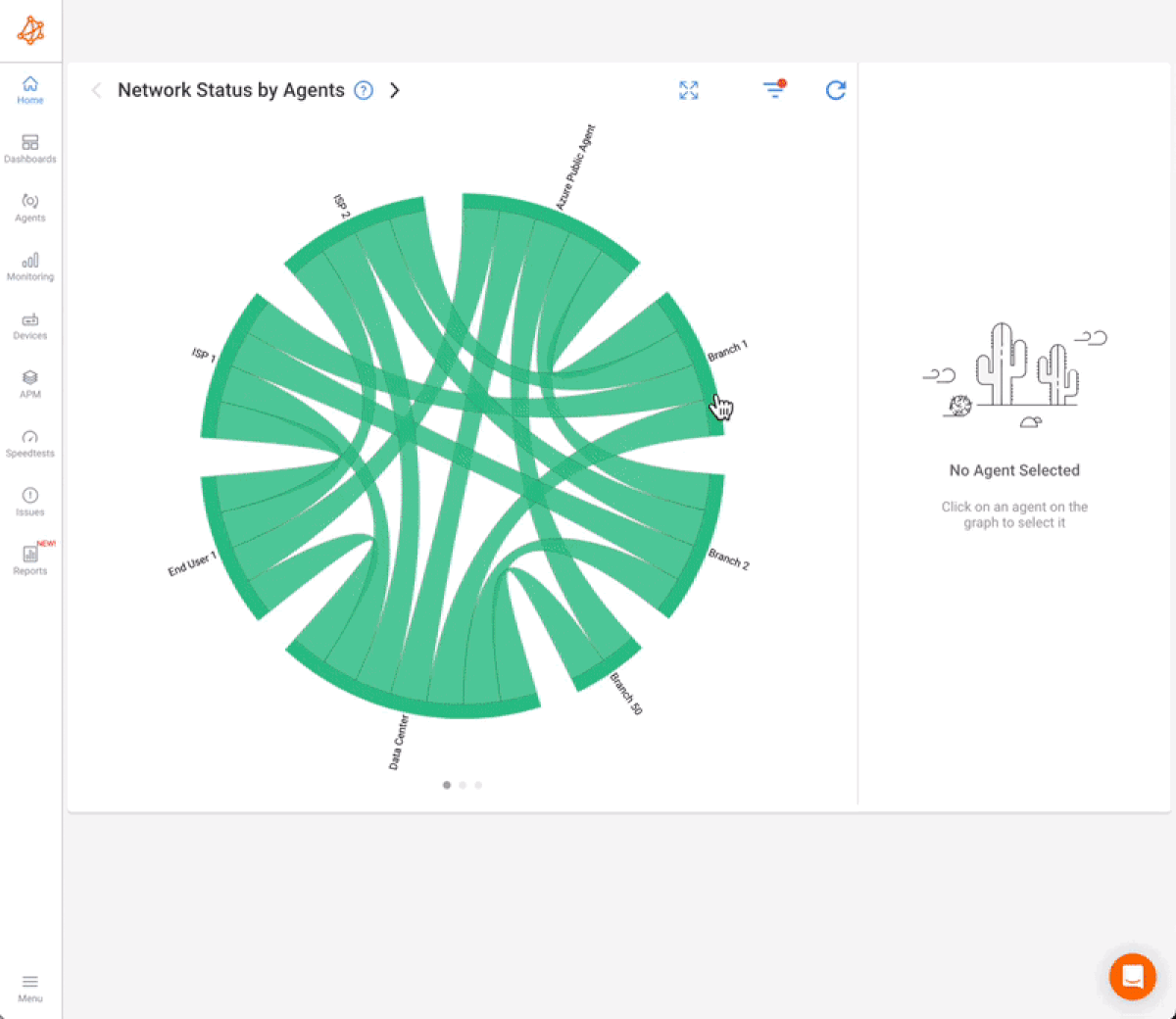

1. Reduce Retransmissions (Optimize TCP Windows):
Retransmissions can significantly impact goodput because they consume bandwidth without contributing to the useful data. To reduce retransmissions, optimize your TCP window size. A properly sized TCP window allows more data to be sent before waiting for acknowledgment, reducing delays and retransmissions. In turn, this will improve goodput and overall network efficiency.
2. Lower Protocol Overhead (Use Newer Transport Protocols):
Protocol overhead (headers, control messages, etc.) can take up a significant portion of your network’s bandwidth, reducing the goodput. One way to lower overhead is by using newer transport protocols that are more efficient in managing network traffic. For example, QUIC (Quick UDP Internet Connections) is a newer transport protocol that reduces overhead and improves data delivery speeds compared to traditional protocols like TCP.
3. Avoid Congestion and Packet Loss:
Network congestion and packet loss are major culprits in reducing goodput. To avoid these issues, ensure that your network is properly provisioned to handle expected traffic loads. Implement strategies like Quality of Service (QoS) to prioritize important traffic and reduce congestion. Additionally, addressing packet loss through better routing or ensuring network reliability will improve goodput by reducing the need for retransmissions.
By implementing these strategies and measuring goodput effectively, you can enhance network efficiency, improve the user experience, and optimize your network’s overall performance.
Both throughput and goodput provide valuable insights into network performance, but they affect your network's performance and user experience in different ways. Here's how each metric impacts your network and why understanding both is essential for optimization.
Bandwidth Utilization: Throughput measures how much of your available bandwidth is being used. High throughput often indicates that a large amount of data is flowing through your network, suggesting efficient bandwidth utilization. However, this doesn’t tell the full story. Throughput includes all data transferred—both useful data and overhead, such as retransmissions and protocol headers—which can inflate the numbers without actually improving the user experience.
Capacity Planning: Throughput is useful when estimating how much traffic your network can handle at a given time. It helps you determine your network’s capacity and identify if your bandwidth is being used effectively or if you're nearing a capacity limit.
Misleading Signals: High throughput doesn't always mean high performance. Since throughput includes overhead and retransmissions, it can be misleading. For example, if you see high throughput during an upload but notice the upload is still slow, the issue could be packet loss or retransmissions. These inefficiencies inflate throughput without improving the actual delivery of data.
Example: If you’re uploading a large file and see high throughput but the upload is slow, the issue could be packet loss or retransmissions, inflating throughput without improving delivery.
User Experience: Goodput directly impacts what the user actually experiences. Whether it’s how quickly a file downloads, how smooth a video stream is, or how responsive a VoIP call feels, goodput represents the useful data being delivered to the application layer. High goodput means that the network is efficiently transmitting data, with minimal retransmissions or overhead, providing a better user experience.
Network Efficiency: High goodput indicates that your network is effectively delivering useful data. It means the network is running efficiently, with minimal delays or wasted bandwidth. When goodput is low, it could mean your network is wasting bandwidth on retransmissions, overhead, or inefficient traffic management.
Troubleshooting Insight: If your throughput remains steady but goodput drops, it could be a sign of underlying issues like congestion, packet loss, or inefficient protocols. This drop in goodput, despite steady throughput, can help network administrators pinpoint and address hidden performance problems.
Example: On a video call, if your throughput is normal but the call lags or breaks up, chances are your goodput is suffering due to poor packet delivery efficiency.
Throughput without Goodput Context: When you focus solely on throughput, you might overestimate the network's quality. High throughput doesn’t necessarily correlate with great performance because it includes overhead and retransmissions that don’t improve the user experience. Without considering goodput, you might think the network is performing well, even when users are experiencing slow transfers or lag.
Goodput without Throughput Context: On the flip side, if you only look at goodput, you might miss signs of underutilized network capacity. Goodput tells you how much useful data is delivered, but it doesn't account for the network's total bandwidth usage. A drop in goodput could point to issues like congestion or inefficiencies, but without throughput data, you might not fully understand the overall network utilization.
Together: Analyzing both throughput and goodput provides a complete picture of network performance. By monitoring both, IT teams can strike the right balance between optimizing bandwidth usage and ensuring that users are getting the performance they need. This combined analysis helps you identify and fix issues like congestion, inefficiencies, or network bottlenecks that affect user satisfaction.
Learn about the differences between network speed, bandwidth & throughput. Find out why your business should measure them and how!
Learn more

By focusing on both metrics, you can optimize your network’s overall performance. Throughput helps in evaluating how well your bandwidth is being utilized and planning for capacity, while goodput highlights potential inefficiencies that could be impacting your network’s effectiveness. Together, these metrics enable better decision-making, more accurate troubleshooting, and a higher level of performance optimization.
To truly optimize your network, it’s important to measure both throughput and goodput, identify areas of inefficiency, and make adjustments to improve the user experience. Whether you're managing a large-scale enterprise network or optimizing smaller setups, these insights will help you stay ahead of performance issues and ensure a smooth, high-quality experience for your users.
Using synthetic traffic and network agents deployed across your network, Obkio provides deep insights into network performance, helping you pinpoint issues like retransmissions, congestion, and protocol inefficiencies. By monitoring these key metrics with Obkio, you can ensure your network is running at its best and delivering optimal performance for your business and users.
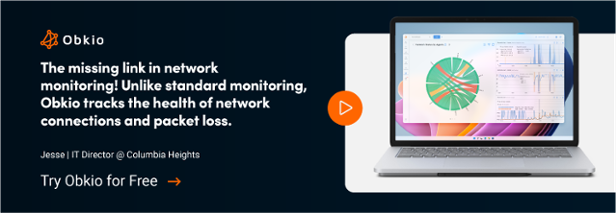
Explore our Throughput Monitoring Tool!
- 14-day free trial of all premium features
- Deploy in just 10 minutes
- Monitor performance in all key network locations
- Measure real-time network metrics
- Identify and troubleshoot live network problems













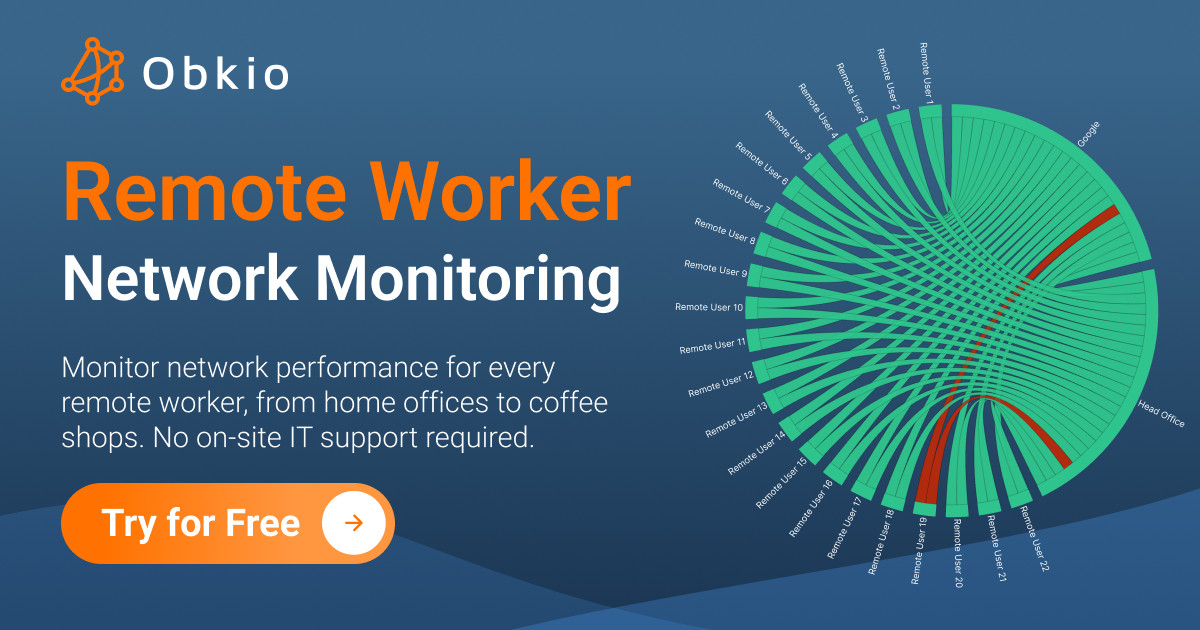













 Obkio Blog
Obkio Blog




